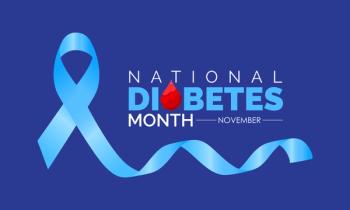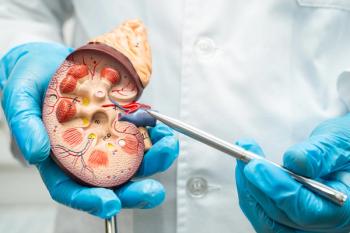
- Fall 2023
- Volume 17
- Issue 2
The Evolving Role of the Pharmacist in Opioid Use Disorder
Pharmacists’ pharmacotherapeutic expertise helps them advocate for their patients and assist providers.
The societal harm brought on by the opioid epidemic is incalculable. In 2021, there were 80,816 opioid overdose deaths in the United States.1 Because of their drug expertise and direct patient care, pharmacists are critical to addressing the crisis by both advocating for their patients and assisting providers. Opioids have a long history of use and were first positively documented in Mesopotamia, with ancient reliefs depicting Papaver somniferum, known as the opium poppy; it was valued for its analgesic and sedative effects.2 However, the roots of the opioid crisis lie much closer to the contemporary era. In the 1990s, drug companies falsified data and cited a high number of undertreated patients with pain to convince the US Drug Enforcement Administration (DEA) and prescribers that opioids were safe and effective.3
Traditionally, specialized clinicians have treated patients with opioid use disorder (OUD). However, because the need is overwhelming, the guidelines recommend enlisting the aid of general practitioners, including primary care, obstetrics, and emergency providers.4 Often a lack of training or resources leaves physicians unwilling to treat patients with OUD.3 The pharmacotherapeutic expertise of pharmacists in addiction services makes them vital resources for prescribers. They can assist in drug selection, dosing, monitoring of guidelines, and treatment optimization.
OUD is characterized by abuse and dependency, including comorbidities such as psychiatric conditions, cardiovascular disease, metabolic disorders, overdose, and withdrawal. During treatment initiation, the patient is monitored closely for signs of withdrawal, which can be mild or life-threatening. Withdrawal is characterized by insomnia, hyperalgesia, anxiety, hypertension, or death.5 Treatment is initiated in the following phases: induction, withdrawal management, and maintenance therapy. Medication-assisted treatments are the standard of care and include FDA-approved agents such as methadone, buprenorphine, and naltrexone.4 In the induction phase, methadone and buprenorphine, long-acting synthetic opioids, are used to ease patients off euphoria-inducing, short-acting opioids. Eliminating the euphoric highs weakens the physiological drive of addiction. Maintenance involves continuing opioid replacement at low doses or ideally transitioning to naltrexone. Overall, methadone and buprenorphine reduce the risk of overdose, reduce risky behavior, and improve outcomes.4
Historically, methadone (80-160 mg daily) has been the mainstay of treatment. As a full μ-receptor agonist, it has the lowest withdrawal potential. Alternatively, it has a narrow therapeutic index because of its high abuse potential, difficulty tapering, overdose potential, complex dosing, and half-life of 12 to 150 hours.5 Buprenorphine (8-24 mg daily), a partial μ-receptor, increases the likelihood of withdrawal. However, compared with methadone, buprenorphine has decreased abuse potential, improved treatment retention, and improved outcomes.6 Buprenorphine, with its superior safety profile, is preferred for induction and maintenance. Recently, the FDA has loosened buprenorphine prescribing restrictions to allow all practitioners with a DEA license to utilize it for treatment without obtaining X waiver certification.4
Naloxone, a short-acting opioid antagonist, is used as a nasal spray for overdose reversal.7 It can be added to buprenorphine products to reduce abuse potential because it blocks intravenous or intranasal opioids.8 Additionally, naltrexone (50 mg daily), a full μ-receptor antagonist, has the greatest propensity for causing withdrawal if used for treatment induction.9 It has high bioavailability and blocks all routes of opioid use.8 Because of these characteristics, it is routinely used for maintenance therapy, where it reduces cravings and prevents relapse. Naltrexone is initiated after the patient is opioid-free for 7 days. It is an excellent long-term therapy because it is well tolerated and lacks addictive potential.9
Pharmacists can advocate for patients who would benefit from long-acting injectables (LAIs). Given these medications high cost, patients may need assistance in accessing them. LAIs are increasingly being prescribed to patients who did not succeed on oral therapy. LAIs can prevent diversion, improve adherence, and prevent relapse. Furthermore, they allow the patient to live a fuller life with long dosing intervals. Products include buprenorphine extended-release (Sublocade; Indivior Inc),10 naltrexone extended-release (Vivitrol; Alkermes Inc),11 and buprenorphine/naloxone (Suboxone; Indivior Inc).8
Additionally, adjunct medications are required to address acute conditions seen with OUD treatment. These include managing insomnia with trazodone (100 mg daily), anxiety with clonazepam (2 mg daily), nausea with ondansetron (8-16 mg every 8-12 hours), hypertension with clonidine (0.1-0.3 mg every 4 hours), and hyperalgesia with gabapentin (1600 mg daily).4
Although buprenorphine is essential in reducing opioid-related morbidity and mortality, sometimes there are supply disruptions with wholesalers placing daily ordering limits. Even specialty addiction service pharmacies may experience shortages when supplying treatment for rehabilitation centers. This can result in subtherapeutic drug levels, disrupting treatment initiation and maintenance, and increasing the risk of withdrawal and relapse. Because we are in a crisis reform, there is a need to ensure a stable supply of buprenorphine.12
Given the extent of the opioid crisis and the complexity of treatment for patients with OUD, pharmacists are essential. Their expertise in medications is invaluable in helping educate prescribers who are unfamiliar with OUD treatment protocols and ensures that patients have their best chance of recovery.
About the Authors
Shamiron Shahbaz-Arami is a PharmD candidate at Creighton University’s School of Pharmacy in Omaha, Nebraska. She has worked in ambulatory care with vulnerable populations. Her pharmacy areas of interest include public health initiatives, behavioral health, and infectious diseases.
Andrew C. Mocny, PharmD, is an intermediate director of pharmacy operations at Genoa Healthcare in Portland, Oregon. He has worked in community health setting treating at-risk populations. He graduated from the University of Buffalo in New York.
References
- US overdose deaths in 2021 increased half as much as in 2020 – but are still up 15%. CDC. Updated May 11, 2022. Accessed August 18, 2023. https://www.cdc.gov/nchs/pressroom/nchs_press_releases/2022/202205.htm#:~:text=The%20data%20is%20featured%20in,2020%20to%2080%2C816%20in%202021
- Buchanan WW, Rainsford KD, Kean CA, Kean WF. Narcotic analgesics. Inflammopharmacology. 2023;10.1007/s10787-023-01304-y. Published online July 29, 2023. doi:10.1007/s10787-023-01304-y
- Volkow ND, Blanco C. The changing opioid crisis: development, challenges and opportunities. Mol Psychiatry. 2021;26(1):218-233. doi:10.1038/s41380-020-0661-4
- Srivastava AB, Mariani JJ, Levin FR. New directions in the treatment of opioid withdrawal. Lancet. 2020;395(10241):1938-1948. doi:10.1016/S0140-6736(20)30852-7
- Methadone HCL - methadone hydrochloride tablet HCL. Daily Med. Updated May 8, 2008. Accessed September 20, 2023. https://dailymed.nlm.nih.gov/dailymed/drugInfo.cfm?setid=552751f7-42ff-40c7-8495-a6aa306d5c23
- Buprenorphine hydrochloride tablet. Daily Med. Updated July 20, 2023. Accessed September 20, 2023. https://dailymed.nlm.nih.gov/dailymed/drugInfo.cfm?setid=a891f3ff-5cad-4e92-b4c4-d5108c8df550
- Naloxone hydrochloride - naloxone hydrochloride nasal spray inhalant. Daily Med. Updated December 20, 2021. Accessed September 20, 2023. https://dailymed.nlm.nih.gov/dailymed/drugInfo.cfm?setid=68723486-8f21-4299-b380-7d5e3f9657b6
- Velander JR. Suboxone: rationale, science, misconceptions. Ochsner J. 2018;18(1):23-29.
- Naltrexone hydrochloride tablet, film coated. Daily Med. Updated February 8, 2017. Accessed September 20, 2023. https://dailymed.nlm.nih.gov/dailymed/drugInfo.cfm?setid=49aa3d6d-2270-4615-aafa-b440859ab870
- Martin E, Maher H, McKeon G, Patterson S, Blake J, Chen KY. Long-acting injectable buprenorphine for opioid use disorder: a systematic review of impact of use on social determinants of health. J Subst Abuse Treat. 2022;139:108776. doi:10.1016/j.jsat.2022.108776
- Kjome KL, Moeller FG. Long-acting injectable naltrexone for the management of patients with opioid dependence. Subst Abuse. 2011;5:1-9. doi:10.4137/SART.S5452
- Ostrach B, Carpenter D, Cote LP. DEA disconnect leads to buprenorphine bottlenecks. J Addict Med. 2021;15(4):272-275. doi:10.1097/ADM.0000000000000762
Articles in this issue
about 2 years ago
Physical Activity Positively Impacts Symptoms of Depression, Anxietyabout 2 years ago
Eight Steps for Success: How to Start Medical Writing as a Studentabout 2 years ago
Understanding Pharmacogenomics Is Essential for Personalized Careabout 2 years ago
Parenting and Pharmacy Residency: 4 Tips and Tricks for Successabout 2 years ago
Pharmacy Residency Is Not the End-All-Be-All for Pharmacy StudentsNewsletter
Stay informed on drug updates, treatment guidelines, and pharmacy practice trends—subscribe to Pharmacy Times for weekly clinical insights.


















































































































































































































